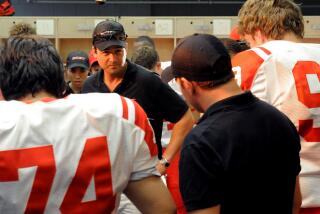‘Funny Girl’ Sparkles in Significant Restoration
The revival of the pain-stakingly restored “Funny Girl” is important for a number of reasons. First of all, the musical biography of comedian Fanny Brice emerges as a true classic, as enthralling as the day it was released in 1968. It is a superb example of Hollywood craftsmanship in which all elements have been blended to perfection with inspired artistry.
Secondly, it is exemplary in the quality of its restoration, a three-year process calling attention to how much effort it takes to restore and preserve a motion picture--and how vulnerable even comparatively recent, post-1950 productions really are.
Third, there’s the electrifying, Oscar-winning screen debut of Barbra Streisand who re-created her Broadway triumph under the beautifully modulated and always controlled direction of William Wyler. Streisand and Brice were made for each other, and Streisand’s incandescent talent and wit bring to life one of America’s most beloved comedian-singers of the ‘20s and ‘30s, who had a second career on radio as the irrepressible Baby Snooks. Brice was a Lower East Side Jewish girl who never hid her origins; she was the daughter of a saloonkeeper (Kay Medford) with a burning desire for stardom fulfilled by Florenz Ziegfeld (Walter Pidgeon), who for years featured her in his lavish revues.
And then there are all those great Jule Styne-Bob Merrill songs, so seamlessly integrated into Isobel Lennart’s script: “People,” “Don’t Rain on My Parade,” plus such songs closely associated with Brice as “Second Hand Rose” and “I’d Rather Be Blue.”
Indeed, all the musical numbers, which were directed by Herbert Ross, are part of the film’s graceful yet dynamic flow, even the loving re-creation of Brice’s vaudeville turns and Ziegfeld’s elaborate production numbers “glorifying the American girl.”
What cinched Brice as a show business legend was her marriage to the gentlemanly gambler Nicky Arnstein, who ultimately went to prison for embezzlement (prompting Brice to sing her heart out with the torchy “My Man.”). The way writer Lennart tells it, Nicky was as good for Brice as she was bad for him, causing him to become ever more reckless in a desperate attempt to keep up with her.
After more than 30 years, it’s easier to appreciate how good Omar Sharif really is as the dashing, proud and gallant Arnstein. At the time, the casting of the Lebanese-born Egyptian star raised eyebrows, and it was widely regretted that Sydney Chaplin was not able to repeat his stage portrayal of Arnstein on-screen. The point is that the Streisand-Sharif chemistry is sensational on-screen.
If Brice’s life and loves have been mythologized in the process, so be it. One of the great pluses of the restoration, overseen by Tom Heitman of New York’s Cineric Restorations, is that it brings out the richness of Gene Callahan’s settings and Irene Sharaff’s costumes, gloriously photographed by Harry Stradling.
To this end, the restorers used the new and improved version of the Technicolor Dye Transfer Process, which etches dye directly on the film print stock, resulting in a print with fully saturated color--a process Wyler and Stradling had used originally. The film’s original six-track stereo masters have also been digitally restored; “Funny Girl” will now be heard in stereo for the first time since the film’s initial release. This restoration is the 155-minute version, complete with overture, intermission and exit music.
“Funny Girl” ultimately emerges as important for yet another reason. At the end of the film, Fanny thanks Nicky for making her “feel beautiful for a long time.” In reply, he looks at her appraisingly and says, “You are beautiful.” He is right, for in her first screen appearance, Streisand smashed the old restrictive Hollywood standards of physical perfection.
Exclusively at the Royal, 11523 Santa Monica Blvd., L.A., (310) 477-5581.
More to Read
The biggest entertainment stories
Get our big stories about Hollywood, film, television, music, arts, culture and more right in your inbox as soon as they publish.
You may occasionally receive promotional content from the Los Angeles Times.






